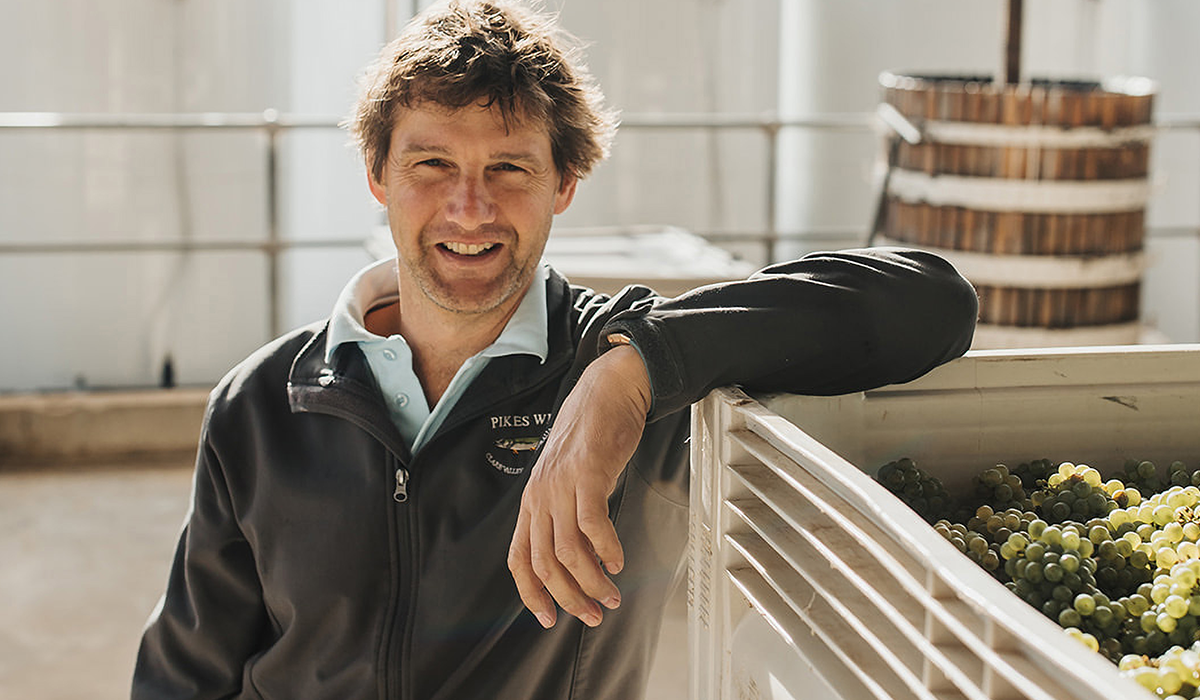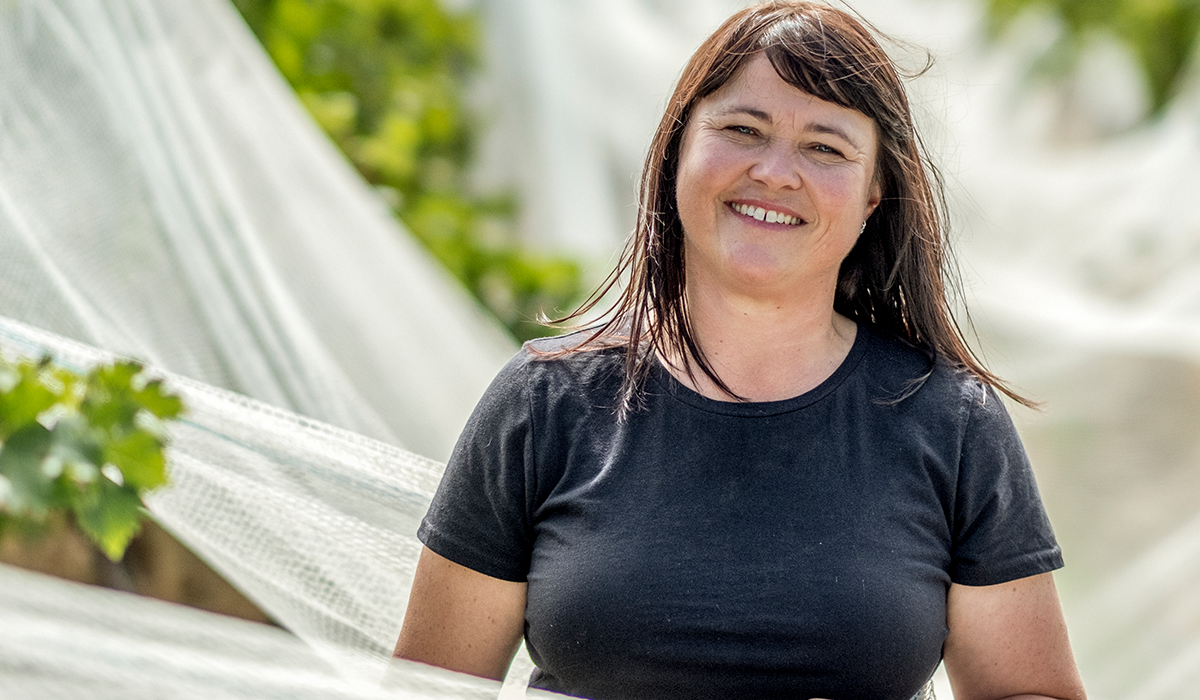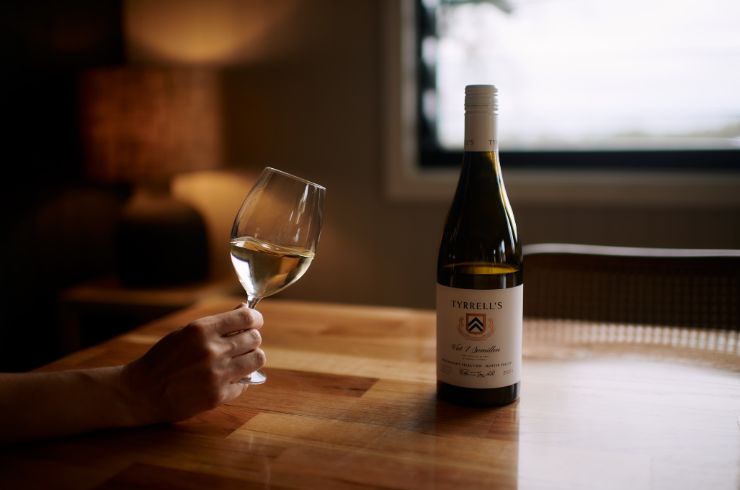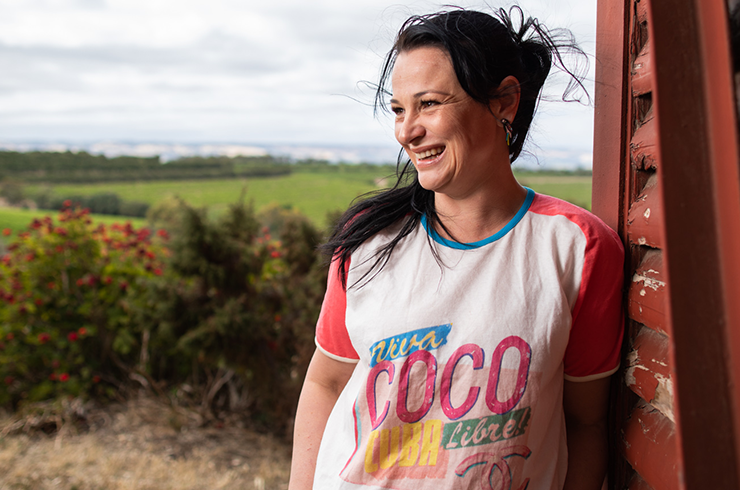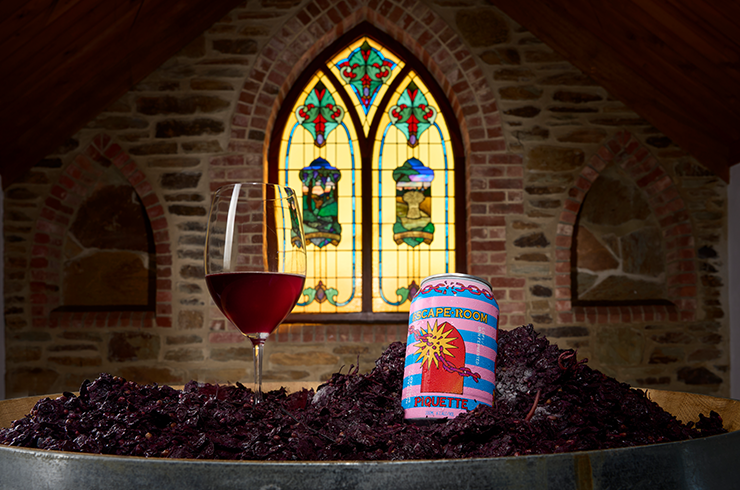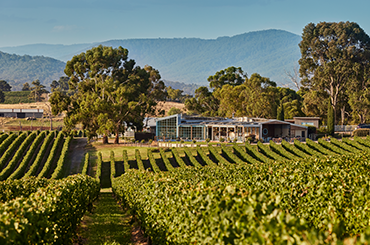It's common for winemakers to move to existing wineries, but what is it like to take over some of the country's biggest names?
We spoke to Yarra Yering's chief winemaker and general manager, Sarah Crowe, who moved to the Yarra Valley giant in 2013 (after more than a decade in the Hunter Valley). In the Clare Valley, Steve Baraglia took over at Pikes, and, in Coonawarra, Kate Goodman moved from Brokenwood and Bimbadgen to lead the team at Penley Estate. So, what does it take? Well, mostly, determination, passion and talent.
Kate Goodman from Penley Estate
“I joke that I was into fermentation before fermentation became cool,” says Kate Goodman of Penley Estate in Coonawarra. “I majored in microbiology, but quickly worked out that sitting in a laboratory in a white coat wasn’t going to be the path for me.”
Thankfully, along the way, she discovered the wine industry. She worked a vintage then enrolled in a wine science degree. After working in the Clare Valley and McLaren Vale, Kate settled at Seppelt in Great Western. “As a young winemaker it was a great experience. There were so many people to learn from. And it was the ’90s; there was money, education, opportunity, and the chance to learn more than just winemaking.”
Kate subsequently moved to the Yarra Valley, where gigs at Punt Road, her own Goodman Wines, and premium contract winemaking soon followed, before she was contacted by Ang and Bec Tolley in Coonawarra. “Their brother, Kym, had recently retired as winemaker, and they wanted me to breathe new light and new vision into Penley Estate – a fresh set of eyes,” says Kate.
“I walked through the vineyard and noted that the quality of the fruit in the vineyard was excellent, but it wasn’t being reflected in the finished wines. Ang said to me, ‘Do whatever you like, as long as it’s not what’s been done in the past’.” Picking earlier, using less oak and not adding tannins were just some of the techniques employed to let the fruit shine through the wines.
Kate’s rejuvenation of the brand and its wines led to her being named the 2018 Winemaker of the Year at the Australian Women in Wine Awards. “There were some naysayers who questioned decisions such as earlier picking and more approachable styles, so it was validation for all the hard work we put in,” says Kate.
Further validation came when she was crowned the Halliday 2024 Winemaker of the Year. “To be recognised as one of the best in your craft is awesome,” says Kate. “The Australian wine industry has given me so much joy over my working life. It’s no secret that there are some rocky roads, but we make world-class wine, and we need to be proud of and understand the value of what we’re doing. I’m still excited by the future.”
Steve Baraglia from Pikes
It may seem like quite a stretch (pun intended) to go from chiropractor to winemaker, but it’s been a worthwhile change of path for Steve Baraglia, chief winemaker at Pikes in the Clare Valley. “I really wanted to be a chiropractor growing up, but I did work experience at a little winery and that prompted me to explore the wine industry instead,” says Steve.
He enrolled in winemaking at Adelaide University straight after high school, but found more of a natural affinity for the vineyard. “I did a postgraduate diploma in viticulture, as I loved learning how vines grow, about balance, structure, and where they’ll be in the next 50 years. Growing up in the Barossa, we have some of the oldest vines in the world.”
His first job came about through luck and a love of football. “I was studying with a woman from the Clare Valley, whose dad was involved with the local football club, and Andrew Pike, founder of Pikes, was club president.” Andrew offered Steve work for a vintage, “to see what happens,” and he’s never left.
In the beginning, Steve worked closely with John Trotter, senior winemaker, Andrew Pike, viticulturist, and Neil Pike, winemaker and Andrew’s brother. In 2012, tragedy struck during vintage, when John suffered a heart attack and passed away. “It was the hardest vintage I’ve ever had to get through, particularly as he was only 44,” says Steve. “So, when people start complaining about rain during vintage, I just think back to 2012.”
Andrew and Neil then offered the role of senior winemaker to Steve, which was bittersweet. But he soon found a desire to look in new directions. “The Traditionale label and bottle is one of the most recognised packages in Australian winemaking, so we have to get it right with all the subregional blending. But we’ve also turned to alternative varieties, such as sangiovese, and now aim for lower alcohol and less oak.”
In 2019, Neil stepped down from the business, followed shortly by Andrew, whose son Jamie later became the managing director. There was some trial and error along the way, which wasn’t helped by the pandemic, or the trade issues with China. Despite his title, Steve still feels most at home in the vineyard. “My favourite way to relax is to prune. I only prune in nice weather. It’s my meditation time.”
Sarah Crowe from Yarra Yering
“I don’t remember ever going, ‘oh, I’m a winemaker now’," says Sarah Crowe, of Yarra Yering, about her measured ascent into the wine industry. Born in Wollongong, she loved being outdoors and feeling soil between her fingers, leading to a degree in horticulture. An overseas trip exposed her to vineyards for the very first time.
Work at Brokenwood and Monarch, then Brokenwood again, was followed by part-time study in viticulture and wine science, then three years at Bimbadgen Estate, where overseeing budgets, maintenance and accommodation – in addition to taking care of the vineyards and winemaking – gave her many valuable skills. But after chalking up 10 years in the Hunter Valley, Sarah was ready for the next adventure.
“I thought, where do I want to be? What wine styles do I want to make? I considered Tasmania – Margaret River was a bit far – until I saw the winemaker position advertised at Yarra Yering, which I hadn’t expected.” Following the passing of its venerable founder, Dr Bailey Carrodus, in 2008, winemaking duties were taken over by Paul Bridgeman, who then left to join Levantine Hill in 2013.
“I didn’t know the wines that well beforehand, but I was excited at the possibility of making cool-climate wines” says Sarah. She thought she’d blown her chances in the interview, saying that shiraz was her favourite grape to work with, but it put her ahead of the pack: it’s the most widely planted grape in the Yarra Yering vineyard.
Sarah has now held the position of chief winemaker at Yarra Yering for more than a decade. “It was pretty nerve-wracking in the beginning. At first, I thought, I have to make these wines how they’ve been made, to be respectful to the brand and the history, and to give people exactly what they anticipate from Yarra Yering.”
Yet since that time, Sarah has leant into the expectations of change and left her own mark on the wines. This has led to the use of less oak, construction of a cool room to chill the fruit, and even employing amphorae, at what is generally seen (erroneously) as a pretty traditional winery – remember that Bailey planted Portuguese varieties in 1990, before they were fashionable here.
“After Bailey died, many people lost their connection to the brand. But when James Halliday gave me the 2017 Winemaker of the Year Award, it made people pay attention again. Still, I play a supporting role – the vineyard is the lead.”
Expand your knowledge with Halliday Wine Academy
Halliday Wine Academy offers an in-depth view of the Australian and international wine landscapes. Select Introduction to Wine to learn about Australian wine and regions or choose Wines of the World (part one) to get to know international wines.Through Introduction to Wine, students will learn about Australian wine and wine regions, how wine is made, how to taste and describe wine, how to approach food and wine matches, along with handy tips that address common wine questions. And in part one of our Wines of the World course, discover and explore the iconic wines, regions and laws of France, Spain, Portugal, Hungary, Germany and Austria.
Top image credit: Yarra Yering.

